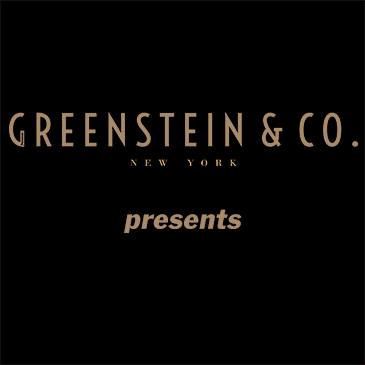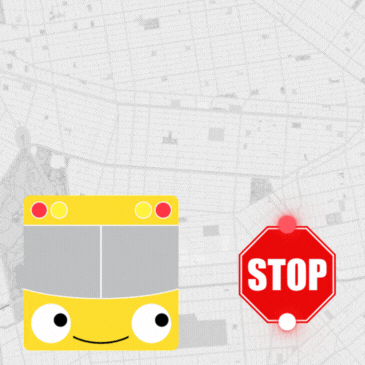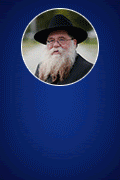
Yom Kippur With The Rebbe & Unique Photos
CrownHeights.info and The Avner Institute present a beautiful timeline of Yom Kippur Memories with the Rebbe with stunning pictures.
Yom Kippur is marked as the most important day on the Jewish calendar – a solemn time of fasting, prayer, and atonement, along with fervent hopes for a clean slate and a bright future. Over the years the holiday was marked with some very special moments, when thousands of guests converged from all over the world at 770 Eastern Parkway to be with the Rebbe and feel the spiritual power of his presence.
Often the days leading up to the holiday were events in themselves.The Avner Institute presents a powerful account by Rabbi Yossi Lew, Chabad emissary to Atlanta, Georgia and Dean of the Atlanta Semicha Program, who vividly describes watching the Rebbe emerge from Kapparos early Erev Yom Kippur morning to giving out lekach [honey cake] to a line of eager thousands and to bestow blessings to yeshiva students all the way through the end of Yom Kippur.
The Rebbe Archive presents a broad photo montage capturing the different moments of the Rebbe around this holy day. With special thanks to Mendy Heyward and Rabbi Yossi Levin.
Gemar Chasima Tova
The Avner Institute
Erev Yom Kippur is one of the most “Chassidisher” yomim tovim (holidays) of the year. The whole world is forgiving each other. The whole world is “farbrenging” and eating food. The whole world is going to the mikvah (ritual pool). The whole world is giving tzedakah (charity). The whole world is about to wear the same uniform – and it is a long levush. The whole world is surrounding itself with holiness, and the whole world is giving brachos!
By the Rebbe, this day, as an appropriate preparation for yom hakodosh, was incredibly packed with greatness.
It all began with Kaporos. The Rebbe would usually arrive at 770 just before 7:00 a.m. A chicken – always immaculately white, with a long red “beard” – would be brought into the Rebbe’s room. With this lucky chicken, the Rebbe did Kaporos privately. Rabbi Yehuda Leib Groner related to me that, as long as he was working with the Rebbe, no one ever was with the Rebbe during Kaporos.
The Rebbe would shortly emerge with the chicken in both hands. The Rebbe would hold this chicken (sometimes through the means of a towel or something) from both sides. The Rebbe’s right hand was on the chicken’s top, and the left hand was on its underside. Sometimes, the Rebbe would hold the chicken at both of its sides. The chicken’s legs would be tied.
For most of the years, the Rebbe would carry this chicken out into the chotzer (courtyard) of 770 – where the sukkah is. The shochet (slaughterer), Rabbi Kalmanson, would set up about half way, close to the first windows of the upstairs shul. In the later years, it was done at the beginning of the chotzer, and in the very later years, at the steps of 770’s front door.

The Rebbe would hand over the chicken – which never made a sound until it was handed to the shochet – and the shochet would shecht (slaughter). To me, it always seemed that the Rebbe either shuddered or reacted in some way when the knife was passed along the chicken’s neck. The Rebbe’s holy face was usually extremely serious and earnest at this time.
Immediately after the shechitah (slaughter), the shochet would direct the opening of the cut to a prepared piece of cardboard wrapped in paper, and allow many drops of blood to fall here. Upon this cardboard was also some dirt. The shochet would then present the Rebbe three or four feathers plucked from the recently shechted chicken. The Rebbe took the feathers, and, as the shochet was still holding onto this piece of cardboard, would drag the dirt over the blood at least five times, after the making of the bracha of covering the blood (al kisui dam be’ofor).

The shochet would soon enter into the Rebbe’s room, where the Rebbe would pay him for the Kaporos. I once heard that the Rebbe would also give him money for tzedakah during this time as well. Not too long after this, the Rebbe would then head to the mikvah.
Erev Yom Kippur was one of the few times in the year the Rebbe would daven (pray) weekday Shachris with the minyan – before 22 Shevat, the Rebbetzin’s yahrzeit. (The other dates: 6 Tishrei, yahrzeit of his mother Rebbetzin Chana; 10 Shevat, yahrzeit of the Previous Rebbe Yosef Yitzchok Schneersohn; 20 Av, yahrzeit of the Rebbe’s father Harav Levi Yitzchok Schneerson; Chol Hamoed, Purim, Tisha B’av and Erev Rosh Hashanah.) This would be one of the rare times to see the Rebbe wearing tefillin.
After Shacharis, long lines would be formed, halfway down Eastern Parkway. This was one of the days the Rebbe would be distributing lekach. After the Rebbe’s heart attack on Shemini Atzeres 5738/1977, the Rebbe instituted the distribution of lekach to a couple of days before Erev Yom Kippur and Hoshanah Rabbah. Announcements were made that whoever was already present should not wait till Erev Yom Kippur, but should go earlier.
[In Tishrei 5780/1980, the Rebbe told my grandfather that it is “a rachmanus (pity)” on those that don’t come for lekach and try to persuade others from not coming, in order to look after the Rebbe’s health. The Rebbe later told my grandfather in yechidus that when the Aibershter sees that the Rebbe is needed, the Aibershter gives more kochos (powers). In 5737/1978, when the line was stopped after a few minutes (I think it was 18 minutes), the Rebbe was really annoyed. Anyone who stopped the lines, said the Rebbe, is a “Chassid sotah (foolish pietist)”!]

Can one possibly imagine: we are talking about Erev Yom Kippur – a busy day for any Jewish person. The Rebbe, of course, must have had so many things on his mind at any time, especially on a day like that day. While the rest of the world was busy eating and doing last-minute things, the Rebbe was standing on his holy two feet, and not just giving, but giving sweetness to all kinds of people! And not just sweetness, but also reassurance, brachos and confidence to a people about to face the holy day of Yom Kippur!
Where does one hear of such dedication and sacrifice for Klal Yisroel? Which of the previous LUBAVITCHER Rebbes did this??
The Rebbe would begin the distribution of lekach at the entrance of his room. The Rebbe would be wearing his silk kapotah (coat), but no gartel (belt). Dozens of large boxes of honey cake would have been inside the Rebbe’s room. The cake would have already been sliced into thin pieces.
The Rebbe’s holy face would be shining at lekach, a countenance of light. Before the Rebbe began the custom of distributing dollars, this would be one of the few times a person could come face to face with the Rebbe. Many people along the lines would be intensely learning, saying Tehillim (Book of Psalms), and so forth.

Finally, one would be right in front of the Rebbe. The Rebbe would hand a piece of cake and say, “L’shanah tovah umesukah” (or something similar). Often, the Rebbe would give another piece of cake, like to heads of schools, for instance, for the person to take back home. Many times the Rebbe instructed the person to organize the backing of a bigger cake, in which the Rebbe’s lekach would be mixed in.
In the early years, the Rebbe would stand and distribute lekach all day, except for a break for mincha and a short time to eat. In the later years, since lekach was also distributed a few days before, the Rebbe had a little more time.
On the way into Mincha, hundreds of pushkes (charity boxes) would be set out on the table in the first section of the downstairs shul. The Rebbe would come with a bag filled with change, and place at least one coin in each box, plate, cup, etc. After 5738/1977, this was stopped.
For Mincha on Erev Yom Kippur, 770 would be packed. The Rebbe’s minhag (custom) was to deliver a bracha after Mincha. In the year of 5742/1981, the Rebbe said a sicha (discourse) on Erev Yom Kippu after Maariv and continued the theme at the bracha after Mincha. Since that year, the bracha of Erev Yom Kippur took on a sicha format, in which the Rebbe would discuss themes connected to Yom Kippur and spend much more time on elaborate brachas for Klal Yisroel. In the later years, the Rebbe would often give brachas with all the letters of the alef beis (alphabet). In certain years, the Rebbe mentioned something from all the Rabbeim (like in 5747/1986). [In the year of 5752/1991, the Rebbe started singing his father’s hakofos niggun after the distribution of dollars following this bracha].
Most people would go home after Mincha and deal with the waning hours of Erev Yom Kippur: there was another meal to eat, mikvah, brachas to the children, and so forth.
But all of this was not for a bochur (young student). For the unmarried ones, the Rebbe himself would be giving a brachah. And for this, much preparation and anticipation was needed. Many would prepare a roll to eat, and that would be the “meal” before Yom Kippur.
Originally, the Rebbe delivered the brachos to the bochurim in his room. When the crowd grew, it was delivered right outside the Rebbe’s room, in Gan Eden
Hatachton (lower paradise). When the crowd grew bigger still, it would take place in the hall (where the Rebbe distributed the dollars). Eventually, it was moved into the upstairs shul, where it remained.

All of the furniture of this room – except for the aron (ark) and the chazzan’s shtender (cantor’s lectern) – would be removed from the room. All the tables would be pushed up against the northeastern wall. These tables formed a stage, upon which the Rebbe’s carpet which was used for the Rebbe’s farbrengen would be spread out. A small staircase would be placed at the end of the tables closest to the door of the room. The Rebbe’s shtender was placed on this “platform,” and the room was now ready.
Until 5738/1977, all the bochurim would cram into this room. The seforim (book) case which fills a giant gap between the two rooms would be removed, opening up the small room, the “cheder sheini,” for more bochurim to see. The window frames would also be removed, opening up more room for hundreds outside, in the chotzer.
The floor and the walls of this poor room would be literally “sweating.” The hoards of humanity packed into this room made it unbearably hot and stuffy.

From 5739/1978 and on, a new rule was instituted: Only bochurim 23 and up, together with chassanim (bridegrooms), would be in the shul. The kvutzah (group) from Israel, together with 22-year-olds, would get the small room. The rest of the guys would be outside. I believe that they later moved the age by one year, so that 22-year-olds were in the small shul proper. The Rebbe also asked that yungerleit (young men) who were in their first year of marriage should also be present, as this bracha was still shayech (relevant) to them.
About licht bentchen (candlelighting) time, or very shortly after that, a hush would fall over the massive crowd. The Rebbe, for the first time seen in his tallis (prayer shawl) and kittel (white cloak), made his way to the shul.
The Rebbe looked nothing less than a malach elokim (holy angel). The Rebbe’s whole demeanor was something difficult to describe, with a holy seriousness that was felt deeply. The Rebbe deliberately made his way to the shtender.
The Rebbe would give a quick glance at the assembled, and would usually hold his tallis over his holy eyes. The Rebbe, in most years, began by reciting the words of birchas kohanim (Priestly Blessing) – just like a father blesses his children. The Rebbe began with the words, “Vayedaber Hashem al Moshe, Daber al Aharon . . . Ko Sevorchu . . . Yevorecheco, etc.” The Rebbe would then continue with the bracha, which would last anywhere from five minutes to fifteen minutes (in the 5740s and 5750s/1980s and 1990s).

A tape, and even a video, would be made, but being after licht bentchen, it was a small mike and recorder in an unofficial capacity. The bracha would be broadcasted downstairs, where yungerleit were preparing for Kol Nidrei. (In 5747/1986, the brachah went about two minutes past shkiah — sundown).
Here too, in the later years, the Rebbe would often give brachos with all the letters of the alef beis. In certain years, the Rebbe mentioned something from all the Rabbeim (like in 5747/1986). From 5749/1988 and on, once the Rebbe was lighting candles in his room, no tape was made. Instead, a couple of the writers of the sichos would transcribe on paper the words the Rebbe said
After this incredible show of fatherly closeness and the special connection shown by the Rebbe to the bochurim, the Rebbe would go down for Kol Nidrei.
In the earlier years, this bracha, which would be about five minutes long, would be quickly typed up and hung on the walls. In the later years, of course, there would not be time. More often than not, though, the Rebbe was magiha (attentive to) these brochos.
What a way to go into Yom Kippur, yom hakodosh!
Meanwhile, downstairs the Rebbe would say the nine kapitelach (Psalms), and then descend from the bimah (platform) to receive the first Sefer Torah for Kol Nidrei. The Rebbe was given the small Sefer Torah, the same one the Rebbe danced with on Simchas Torah. The Rebbe would stand right next to the chazzan, on his right. More often, the Rebbe could be seen shockling (swaying) ever so lightly from side to side during Kol Nidrei.
After Maariv, the Rebbe instituted (an old custom) of remaining in shul to recite the entire Tehillim. The Rebbe had a relative who would travel from Tel Aviv by the name of Schmerling. He would be the chazzan for Tehillim, and he would FLY through it. (The same thing happened on Hoshanah Rabbah at night). He also had a very distinct voice and style.

The Rebbe would often not keep up with the oilom (congregation) for Tehillim, and would leave in the middle. There were years the Rebbe simply stayed at his place until finishing the sefer. One of the very early years, the Rebbe went over to the omud (stand), and began to continue saying the Tehillim from where he was holding, ending each mizmor (verse) like a chazzan.
When the Rebbe left and entered the shul on Yom Kippur, there was singing. I am not sure how this was in the real later years.
Yom Kippur morning was one of the only times the Rebbe did get Maftir. This was usually given to Rabbi Chodakov (Solu Solu). An interesting hanhagah (practice) of the Rebbe was regarding the times to bow in the “Vehakohanim” (during the Musaf service). The Rebbe would actually say the entire piece and bow for “Koirim,” before the chazzan began. The Rebbe would then turn, and look at the chazzan for the entire repertoire of the “Vehakohanim.”
For Mincha, the Rebbe entered the shul with his tallis on his shoulders while wearing his hat. The two doors in the Rebbe’s shtender would be left open, and the Rebbe would place his hat, upside down, inside the shtender and close the doors. Before that, though, the Rebbe would quickly place his tallis on top of his head.

Maftir Yona, in the early years, would be a time the Rebbe would cry rivers of tears. In the later years, though – as in the majority of the haftoras – the Rebbe hardly cried at all.
After Maftir Yonah and the Rebbe’s return to his place, there would be a crush pushing towards the front. Everyone wanted to be as close to the Rebbe as possible for Napoleon’s March.
n 5737/1976, the Rebbe brought all the kids up onto his bimah halfway through Neilah.
Neilah was a real earnest time by the Rebbe. The Rebbe was seen, many times, with his holy head under his tallis. Certain years it was very evident that big things were happening.
And then came “Ovinu Malkeinu.” At least from the mid-5730s/1970s, the niggun (melody) of “Ovinu Malkeinu” of Neilah was sung no less than twice. In 5841/1980, when Yom Kippur was on Shabbos, the Rebbe indicated to repeat the niggun TEN times, each time more intense than the previous one. The tenth time, the Rebbe was using both hands and pounding them on the shtender.
One year (either 5744/1983 or 5746/1985), the oilom finished saying “Ovinu Malkeinu,” and the Rebbe remained standing. All of a sudden, loud cries, mamosh (actual) sobs, came from the Rebbe. It was SHRECKLACH (awesome).
Without turning around towards the chazzan, the Rebbe motioned with his whole arm – similar to how the Rebbe was m’oided niggunim (conducting melodies) – to continue on (with Shema Yisroel). After the chazzan reached “Da’amiron B’olmo V’imru Omein,” the Rebbe would bang on the shtender to begin Napoleon’s March. Sometimes, the niggun would go through a whole cycle before the Rebbe turned around. Until 5742/1981, and including 5742/1981, the Rebbe would climb onto his chair and encourage the singing while dancing on the chair.

Just imagine how the niggun took off after that, as every mouth in 770 began to roar that niggun. Words fail me to describe what this was like. It was a simcha (joyous event) that could not have been anything less than yismechu hashomayim vesogeil ha’aretz. One felt that the entire seder hishtalshlus (Divine link), but certainly every inch of that shul was piled onto that chair, dancing with the Rebbe.
As the singing and the dancing intensified, the Rebbe’s tallis began to fly in all directions. Many times, the Rebbe would fling the sides of his tallis back over his shoulders, and continue encouraging the simcha.
I defy anyone to get onto a chair with a cushion, and try to dance. And yet, here was the Rebbe clapping, swinging his arms and dancing on his chair. What a sight to behold!
In 5742/1981, the Rebbe lost his footing a couple times during the dancing. For Yom Kippur 5743/1982, with the Rebbe’s agreement, they built a platform with stairs leading up to it. The Rebbe was now on sturdy footing, and was much higher so that more of the oilom could witness the scene of “Uv’chein ma nehdar hoyoh kohen gadol betzeiso.”
Indeed, the Rebbe would usually dance for a longer time after this special bimah was made. Many times, the Rebbe would be swinging both arms around. Also, many years, the Rebbe’s face was covered. In 5745/1984, the Rebbe still cried during Napoleon’s March.
In 5752/1991, the Rebbe started other niggunim after Kaddish: “Nyet, Nyet” and “Uforatzto.” In 5734/1973, during the Yom Kippur War, the Rebbe did not climb onto the chair. There was a more “controlled” simcha.

After the tekiah (ram’s horn blast), the Rebbe would put on his hat. After Maariv, the Rebbe looked completely UN-Yom Kippur’dik. It was Succoth, and even Simchas Torah. The change in the Rebbe was min hakotzeh el hakotzeh (one extreme to the next). The Rebbe, as was the usual hanhagah, would turn around in the middle of the last Kaddish, and his panov hakodosh (holy countenance) was beaming, shinning.
The Rebbe would wait till after Havdalah, and then, for the first time this season, would announce three times: GOOD YOM TOV, GOOD YOM TOV, GOOD YOM TOV! The whole oilom would follow the Rebbe by bellowing out “Good Yom Tov” three times. The Rebbe would begin “Vesomachto,” or, in some of the later years, his father’s hakafah niggun.
Z’man Simchoseinu had arrived in a flash!
If possible, the Rebbe would go for Kiddush Levanah with the tallis and kittel. In some years the Rebbe started niggunim, and sometimes the Rebbe said a few words as well (as in 5790/1989).
When the Rebbe would eat the yom tov meals in the Frierdiker Rebbe’s apartment, Motzei Yom Kippur would be one of those meals. In the year of 5724/1963, the Rebbe came downstairs following the meal, and a few minutes later (about 11:00 p.m.) suddenly emerged to say a ma’amar (speech) in the upstairs small shul. The shul was in somewhat of a mess, but the Rebbe sat himself down, and said this ma’amar of about fourteen minutes. It was about why matan Torah (giving of the Torah) was given only to those who were there, while the Avos (Patriarchs) and the others were not zoche (merited) to this. There may have been about ten people there.
May we have the Rebbe emerge for this Yom Kippur, as we experience Yom Kippur all together in the Beis Hamikdosh bimheiroh veyomeinu mamosh!
To receive letters and inspiring stories about
the Rebbe, email Rebbebook@gmail.com















Thank you
Thank you for sharing this beautiful description! For those that have not experienced it, it makes us feel closer than we can ever get.
Thank you again!
CH Mother
I agree with #1. I feel like I was there. I pray this year we are zocheh to see the Rebbe B’guf leading the Chassidim in our holy niggunim.
AshMan
Thank you. We need more such articles for today’s generation. I only merited to see the Rebbe after his stroke.
elisha
EVERYONE remember to email rebbebook@gmail.com and blessings to all are inbvolved at ch.info for making this available for this alone you can say on the whole website and in truth the whole internet dayeinu